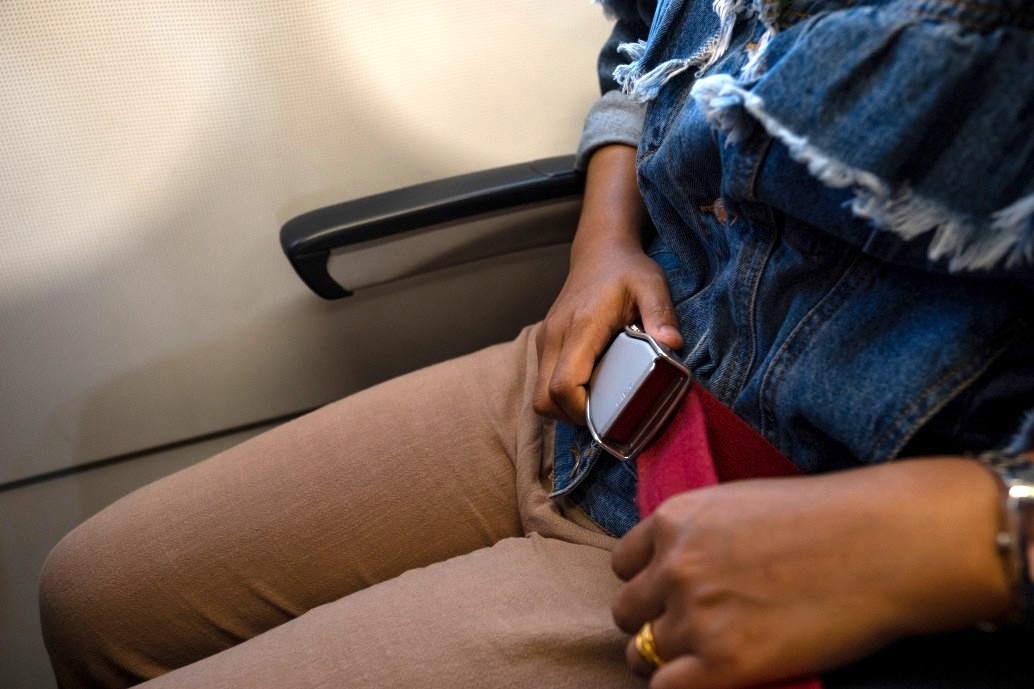Air travel can be an exciting adventure, but for plus-sized travelers, it can also present unique challenges. Navigating tight spaces, cramped seats, and sometimes judgmental attitudes can make flying a daunting experience. However, with some helpful tips and considerations, plus-sized travelers can make their journeys more comfortable and enjoyable.
Here is a list of tips for plus-sized travelers to have a smoother flight experience.
1. Seat Selection Matters
Selecting the appropriate seat is a critical consideration for plus-sized travelers. When booking your flight, opt for an aisle seat whenever possible. Aisle seats provide more room to maneuver, allowing you to access the restroom or stretch your legs without disturbing fellow passengers. Additionally, consider the seat’s location within the aircraft. Seats located towards the front of the plane typically offer more legroom and a smoother ride, making the journey more comfortable.
For a more enjoyable flying experience, it’s advisable to book your seat in advance. This ensures that you have the opportunity to choose the most accommodating seat for your needs. Keep in mind that different airlines and aircraft may have varying seat sizes and configurations. Conducting some research before booking your flight can help you identify the most suitable options.
2. Research Airlines and Planes
When planning your air travel, researching the airlines and specific aircraft you’ll be flying on is crucial. Different airlines and airplane models offer varying seat sizes and configurations. For plus-sized travelers, this information can make a substantial difference in your comfort during the flight.
First, explore the airlines themselves. Some airlines can provide more spacious seating, while others may offer narrower seats. Research customer reviews and online forums to gather insights into the experiences of other plus-sized travelers with a particular airline.
Next, consider the specific plane model you’ll be flying on. Even within the same airline, different aircraft may have different seat widths and configurations. Some planes feature wider seats in particular rows or sections, and this information can be invaluable when selecting your seat during booking.
3. Seat Belt Extenders
Seat belt extenders can be a helpful accessory to ensure your safety and comfort during the flight. If you anticipate needing a seat belt extender due to the standard seat belt being too short, it’s a good idea to request one discreetly from the flight attendants as you board the plane. By doing this quietly, you can avoid drawing unnecessary attention to yourself and maintain your privacy.
Most airlines are well-prepared to provide seat belt extenders, and flight attendants are accustomed to accommodating passengers who require them. These extenders are designed to securely and safely fasten your seat belt, making it comfortable and secure throughout the flight. By having a seat belt extender ready, you can alleviate concerns about in-flight safety and ensure you are prepared for a safe journey.
4. Carry an Extra Seat Cover
When it comes to enhancing your comfort during air travel, carrying an extra seat cover or cushion can make a significant difference. Plus-sized travelers often find that these simple accessories provide extra padding and alleviate discomfort during long-haul flights.
Seat covers or cushions come in various styles and materials, allowing you to choose one that suits your preferences. They can be especially helpful when the standard seat padding doesn’t provide sufficient support. Additionally, a seat cover can help reduce pressure points and promote better posture throughout the flight.
Bringing an extra seat cover can be particularly beneficial on long journeys, as it can help reduce fatigue and discomfort, allowing you to arrive at your destination feeling more refreshed. Plus, these accessories are typically lightweight and easy to transport, making them a convenient addition to your travel essentials.
5. Dress Comfortably
Choosing the right clothing for your flight is also essential. Opt for loose-fitting, breathable attire that allows for comfort during the journey. Wearing layers can be particularly advantageous, as it enables you to adapt to changing cabin temperatures throughout the flight. Layers can easily be added or removed as needed.
Consider clothing made from natural, breathable materials such as cotton or linen, as these fabrics can help regulate your body temperature. Avoid clothing that is tight, restrictive, or constricting, as it can cause discomfort during long flights.
In addition to your clothing choices, consider wearing compression socks. These socks can help prevent swelling in the legs during extended periods of sitting. They promote healthy blood circulation, reducing the risk of developing deep vein thrombosis (DVT) and enhancing your overall comfort.
6. Overhead Space
Travelers should be aware of the limitations of overhead compartments on airplanes. These compartments are often limited in space, and your carry-on items may not fit comfortably.
To ensure that your essential items are accessible throughout the flight, consider packing a smaller bag that you can keep under the seat in front of you. This way, you’ll have quick access to personal items like snacks, reading materials, and electronic devices without the need to reach overhead.
When storing larger carry-on items in the overhead compartments, be mindful of fellow passengers. Try to minimize the space your bag occupies and ensure it’s stored securely to prevent shifting during the flight. This consideration helps create a smoother boarding and disembarking process for all travelers.
7. Take Advantage of Pre-Boarding Options
Many airlines offer pre-boarding for passengers with special needs, including those who may need extra time or assistance. Plus-sized travelers should take advantage of this service when available. Pre-boarding allows you to board the plane at a more leisurely pace, reducing the rush and anxiety that can sometimes accompany the standard boarding process.
By pre-boarding, you have the opportunity to find your seat, stow your carry-on items, and settle in without the pressure of a crowded cabin. This can be particularly beneficial if you need a little extra time to get comfortable and organized.
When you arrive at the gate, inquire about pre-boarding and the airline staff will guide you through the process. This service is designed to ensure that passengers with specific needs have a smooth and stress-free boarding experience, and it can greatly enhance your overall journey.
8. Speak Up
It’s essential to advocate for your needs and comfort during air travel. If you encounter any challenges or issues during your flight, don’t hesitate to speak up and communicate your concerns to the airline staff or flight attendants.
If you face difficulties with your seating or any other aspect of your journey, addressing these issues promptly can help resolve them. Airlines are generally committed to ensuring that all passengers have a comfortable and safe flight, and they are there to assist you.
Whether it’s a problem with your seat, a need for additional accommodations, or any other specific requirements, don’t be shy about requesting assistance. By communicating your needs respectfully, you can work with airline staff to find solutions that enhance your overall flying experience.





